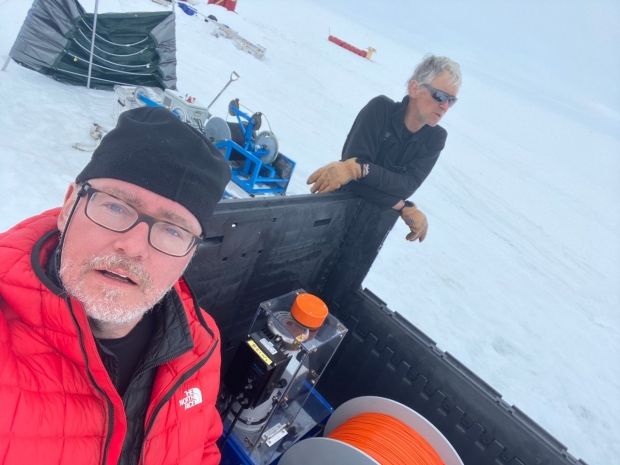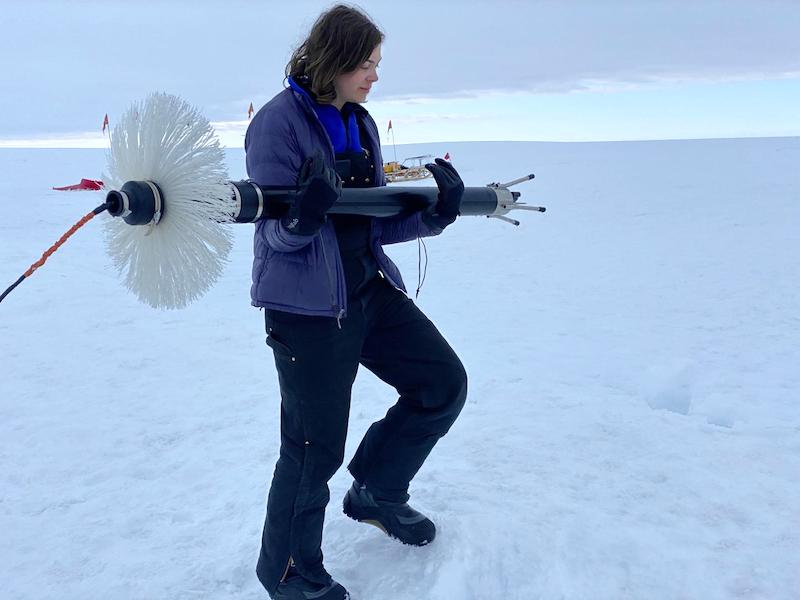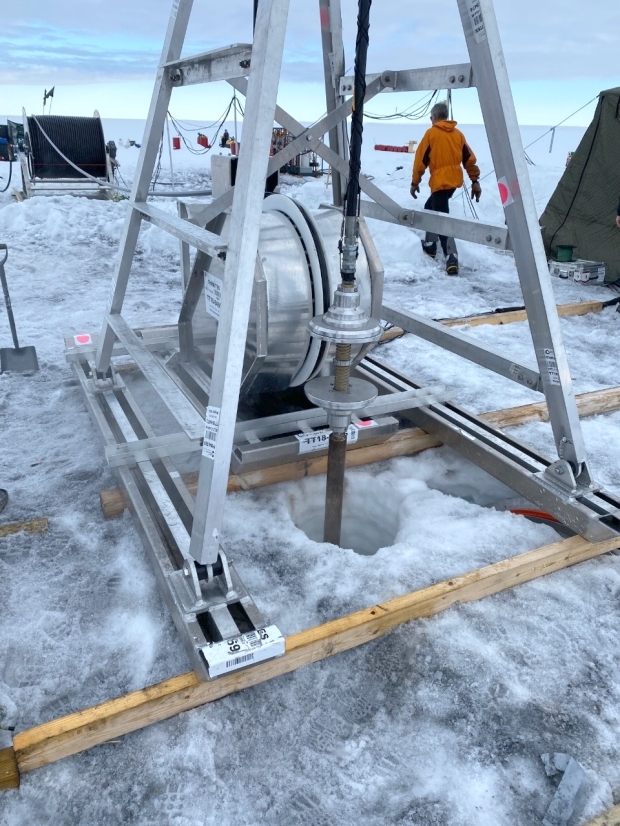For the first time, scientists have measured the presence of warm water at a vital point underneath rapidly melting Thwaites Glacier – which the BBC once labeled as Doomsday Glacier – in western Antarctica. With Pine Island and Smith Glaciers, Thwaites is sometimes called the weak underbelly of the West Antarctic Ice Sheet. At its surface, it moves at 1.2 miles per year (2 km per year) near its grounding line. The water below it was measured earlier this year, through a small but extremely deep hole drilled in Thwaites Glacier at the point where the bedrock underlying the glacier meets the sea. A January 29, 2020, statement from New York University (NYU), which conducted the research, said this finding is:
… an alarming discovery that points to the cause behind the gradual melting of this ice shelf while also raising concerns about sea-level rise around the globe.
The recorded warm waters were more than two degrees above freezing.

The West Antarctic Ice Sheet – whose bed lies well below sea level and whose edges flow into ice shelves that jut out and float on the Amundsen Sea – has been watched carefully for some years. Scientists believe it has the potential to collapse suddenly, raising sea levels around the world. The new measurement of warm water under Thwaites Glacier is just a small piece of the puzzle of this region, one of many studies that have been conducted in recent years, as scientists try to determine the stability of the ice sheet. According to the scientists who conducted this study:
Thwaites’ demise alone could have significant impact globally.
It would drain a mass of water that is roughly the size of Great Britain or the state of Florida and currently accounts for approximately 4 percent of global sea-level rise. Some scientists see Thwaites as the most vulnerable and most significant glacier in the world in terms of future global sea-level rise. Its collapse would raise global sea levels by nearly one meter, perhaps overwhelming existing populated areas.

The new measurement was made at the glacier’s grounding zone; that’s the place at which the ice transitions between resting fully on bedrock and floating on the ocean as an ice shelf. The scientists’ measurements were made in early January 2020, after the research team used hot water drilling to create an access hole in the glacier. The hole was not very wide (35 cm or about a foot wide). But it was extremely deep – 600 meters (2,000 feet) deep – or about the depth of 6 1/2 American football fields laid end to end. The researchers then deployed an ocean-sensing device to measure the waters moving below the glacier’s surface. They said:
This device gauges the turbulence of the water as well as other properties such as temperature. The result of turbulence is the mixing of fresh meltwater from the glacier and salty water from the ocean.
[The new work] marks the first time that ocean activity beneath the Thwaites Glacier has been accessed through a bore hole and that a scientific instrument measuring underlying ocean turbulence and mixing has been deployed. The hole was opened on January 8 and 9 and the waters beneath the glacier measured January 10 and 11.
The scientists said they expected the data gathered in the field will enhance scientific understanding of how ocean conditions are affecting the melt rate of Thwaites Glacier. They said:
When this is combined with ice sheet models it will allow the glacier’s potential sea-level contribution to be more accurately predicted.
David Holland of NYU – who co-led the expedition to Antarctica – commented:
Warm waters in this part of the world, as remote as they may seem, should serve as a warning to all of us about the potential dire changes to the planet brought about by climate change. If these waters are causing glacier melt in Antarctica, resulting changes in sea level would be felt in more inhabited parts of the world.
For more about the project, visit https://thwaitesglacier.org/projects/melt.




Bottom line: For the first time, scientists have measured the temperature and turbulence of warm water flowing underneath Thwaites Glacier in Antarctica. The glacier is one of several in the West Antarctic Ice Sheet that is known to be melting rapidly, with the potential to cause dramatic sea level rise.











